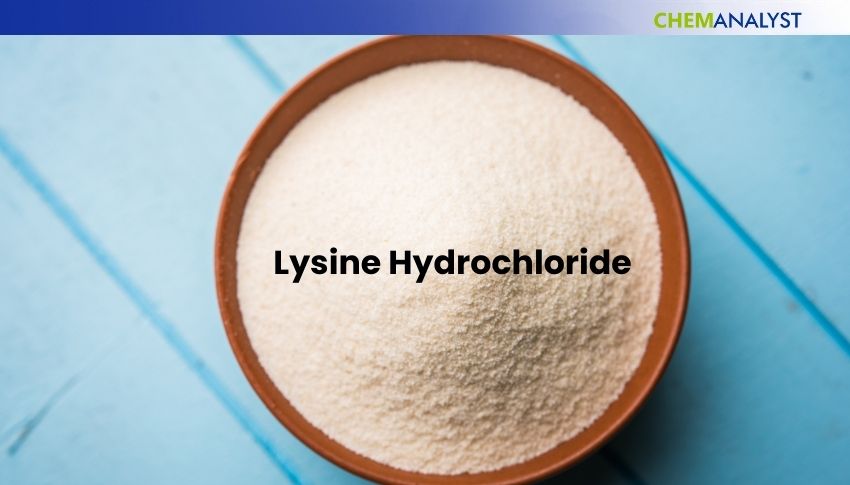Welcome To ChemAnalyst

During July 2025, the worldwide Lysine Hydrochloride market witnessed prices plummet to multi-year lows driven by aggressive Chinese exports and poor demand from the animal feed industry. The U.S. market suffered severe declines owing to oversupply, excessive inventories, and sluggish livestock consumption. Chinese exporters increased shipments to non-EU countries prior to anticipated EU anti-dumping tariffs, driving global prices lower. A stronger dollar made imports cheaper, putting additional pressure on domestic producers. Buyers delayed purchases and switched to substitute proteins, keeping the market under pressure. Price recovery will rely on demand resumption and decreased export quantities from China after the imposition of tariffs.
In July 2025, the international Lysine Hydrochloride market faced a sharp downturn, with most benchmark prices reaching all-time historical bottoms in the face of a coincidence of bearish supply and demand fundamentals. The U.S. market posted one of the sharpest price reversals on record due to oversupply, poor downstream demand for lysine hydrochloride, and the expectation of changes in global trade policies.
Prices for lysine hydrochloride—fell to multi-year lows as Chinese-origin cargoes flooded international markets at aggressively discounted rates. In the U.S., prices for feed-grade lysine hydrochloride showcases a downward trend compared to June, extending a persistent downward trend that began in Q2. The correction was intensified by sluggish livestock feed demand and high carryover stocks at key Midwest distribution hubs, pressuring domestic suppliers to adopt deep discounting strategies.
China's aggressive export prices were identified by the industry players as a key driver of bearish action for lysine hydrochloride. In anticipation of the European Union's impending anti-dumping announcement—available by July 21, 2025—the Chinese manufacturers increased shipments into the non-EU countries, more particularly the U.S., Southeast Asia, and Latin America. This wave of cheap products not only undercut regional pricing structures but also disrupted long-term contract stability in the context of purchasings of lysine hydrochloride. In the United States, consumers delayed purchases expecting prices to continue softening, further entrenching market stagnation early in July.
Furthermore, macroeconomic pressure exacerbated the weakness of the market. The U.S. currency's strengthening relative to major Asian currencies made imports more affordable, and U.S. purchasers shifted to lower-cost Asian imports such as those for lysine hydrochloride. Such a shift undermined the competitiveness of domestic manufacturers, who experienced increasing energy and input costs in the face of flat demand. Large U.S.-based manufacturers and distributors are said to be reassessing production plans and inventory targets for lysine hydrochloride during Q3 and Q4 in order to minimize margin compression.
On the demand side, downstream lysine hydrochloride's feed formulators and integrators have been on guard. Feed usage in poultry and swine industries did not recover as hoped for in July, and several integrators have realigned their feed mix to utilize more affordable protein ingredients. The overall animal nutrition sector also experienced subdued procurement activity with end-users waiting on the sidelines amidst price fluctuation uncertainties.
In the near future, analysts indicate the U.S. Lysine Hydrochloride market can expect sustained price pressure until August unless Chinese exports start normalizing after EU tariff announcements.However, any upward correction remains contingent on a decisive recovery in demand and tighter inventory discipline.
In the coming period, analysts say, U.S. Lysine Hydrochloride market will continue to face price pressure through August unless Chinese exports begin to improve following EU tariff announcements. However, any upside correction will depend on strong demand recovery and tighter inventory discipline.
Short term, purchasing will be wait-and-watch mode, with it riding this current lysine hydrochloride's low-price situation with producers positioning themselves for further volatility. Existing price climate, while beneficial to feed buyers, is increasingly compressing the finances of both global and domestic manufacturers, rewriting the competitive game for the rest of 2025.
We use cookies to deliver the best possible experience on our website. To learn more, visit our Privacy Policy. By continuing to use this site or by closing this box, you consent to our use of cookies. More info.
